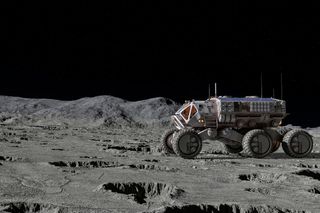
Topics: Astronautics, Astrophysics, Moonbase, NASA
One of the key challenges in building and sustaining a permanent settlement on the moon, as in 2001: A Space Odyssey, is finding a reliable and economical means of transporting essential resources, such as water and energy.
The good news is that while the moon may look like a barren wasteland — and, according to NASA, be a hundred times drier than the Sahara — it is not quite as desolate as it first appears. This is because for billions of years, particles have travelled from our atmosphere to its surface via the Earth’s geomagnetic field, scientists at the University of Rochester reported in the journal Communications Earth & Environment.
"By combining data from particles preserved in lunar soil with computational modeling of how solar wind interacts with Earth's atmosphere, we can trace the history of Earth's atmosphere and its magnetic field," Eric Blackman, a professor in the Department of Physics and Astronomy and a distinguished scientist at University of Rochester's Laboratory for Laser Energetics (LLE), said in a statement.
A previous analysis of these soil samples found light volatile elements, such as hydrogen, helium, neon, argon, and nitrogen. Crucially, these substances have been found in lunar soil but not in lunar rock, meaning they must have come from elsewhere. While their presence can, in part, be attributed to the steady stream of particles that emanates from the sun (solar wind), the volume of nitrogen in the soil suggests there is at least one additional source.
A few theories have been put forward, including those that suggest the light volatile elements arrived on interplanetary dust, through asteroid collisions, or from the gas of lunar volcanoes. However, one leading theory is that the particles have a terrestrial origin.
If this is indeed the case, the question is: when and how did they travel from Earth to the moon? In 2005, a separate team of researchers made the case that the particles made the journey before the formation of Earth’s magnetic field. Twenty years later, Blackman and co put that theory to the test.
Terrestrial Particles Travel to the Moon by Hitchhiking Along Earth’s Magnetic Field Lines, Rosie McCall, Discover Magazine